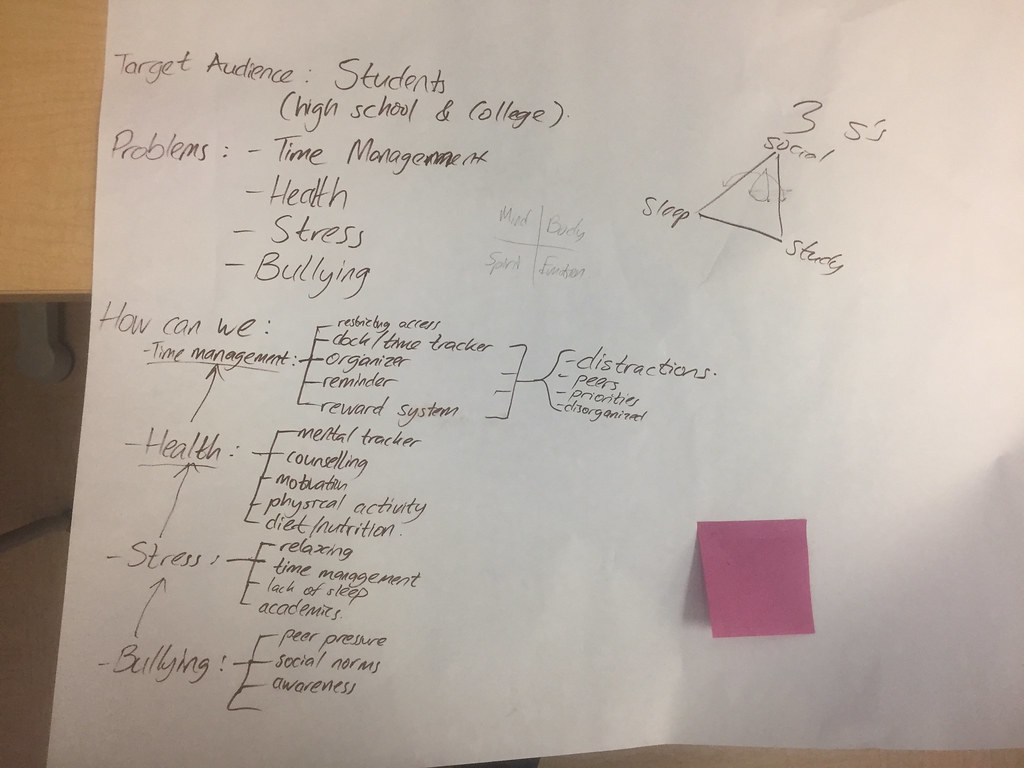In recent times, people believe that every problem has already been solved or that there are no more ideas to come up with – the difficulties and lack of creativity. This week helped us find ways around this.
To be the missing piece to the puzzle, you have to know what the puzzle is – you have to imagine what will fill in the missing spot.
This is the first thing we learned this semester – how we can address problems using What/SoWhat/NowWhat template. It is a brainstorming method that can help ideators immerse themselves in the problem/situation to be able to empathize with the user and then come up with a solution – the missing piece. This template allows people to have a structured way of being creative, innovative and problem solving. It gives a broadly scoped problem a structure, a frame and a regularities. And during this week of class, that is what we did, using the What/SoWhat/NowWhat and the HowCanWe that we learned first from our exercise with the Design for America group. Jacob Goldenberg, David Mazursky, and Sorin Solomon’s article “Creative Sparks” does a great job in explaining this and analysing the need and usefullness of the application of frames or regularities in the creative process. They even go further in giving examples and I could draw more examples from industry situations where companies essentially copy another companies process but for a different field or problem but are still deemed ‘creative’. This template used more specifically to coming up with a solution to an already given problem by using or modifying something that already existed. This kind of tied into what David Kelley said in his interview with 60Minutes. It encompassed the How Can We methodology and the idea to improve on something else that already exists. Using what we learned, we came up with diagram below which showcases that structure that we used to come up with ideas listed below.
We used this structure in a different way. We used it to decide which problem to tackle then applied it to that problem. As seen in our picture above
For our semester project, what we have so far:
1.) Feedback/Story droid – inspired by the blabdroid
-How can we capture students stories in the MakerLab?
-How can we make a place (The MakerLab) more interactive?
2.) Self Watering Plant pot – inspired by a thingiverse model
-How can we help potted plant goers water their plants when they are not around?
3.) Board copier/transfer – our very own idea
-How can we help students with limited/timed access to whiteboards keep/transfer their work to another whiteboard or physical print?
4.) Time management compact holder/watch – our very own idea that we came up with using the template in the picture above.
-How can we help busy students manage their time or balance between (Sleep, Study and Social Life)?
We also got to listen to Mike Bohlman tell his story in creativity and the maker movement at the Makerspace in Urbana. Not only is he a pilot and gamer but he is a maker who comes up with ideas in the area of former two such as 3D printing holders for instruments in the cockpit for one of the planes he flies and the StarWars game that he made and is up for display at a game store in Champaign. To see more of his great work and projects, they are all available on his website at this link. He incorporates the lessons (templating) we learnt this week in his work with arduinos by improving and modifying code that he finds online in a new and innovative way.
This concept of structured creativity is a powerful concept, and I hope to incorporate it in our semester project. Other resources to learn more about this is also Edward de Bono’s article ‘Creativity is easier when it’s structured’.


